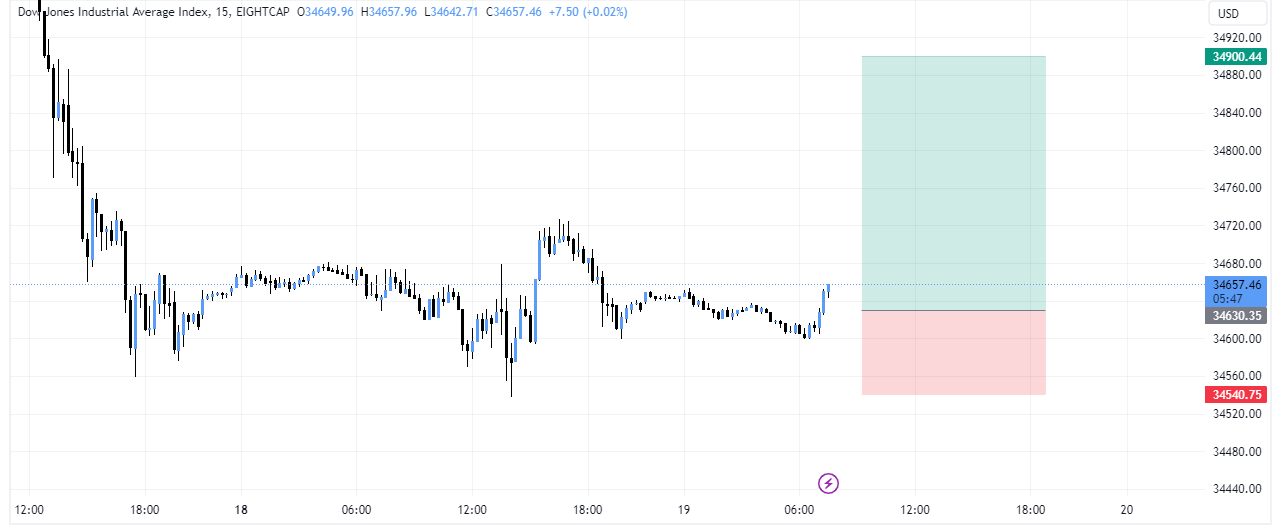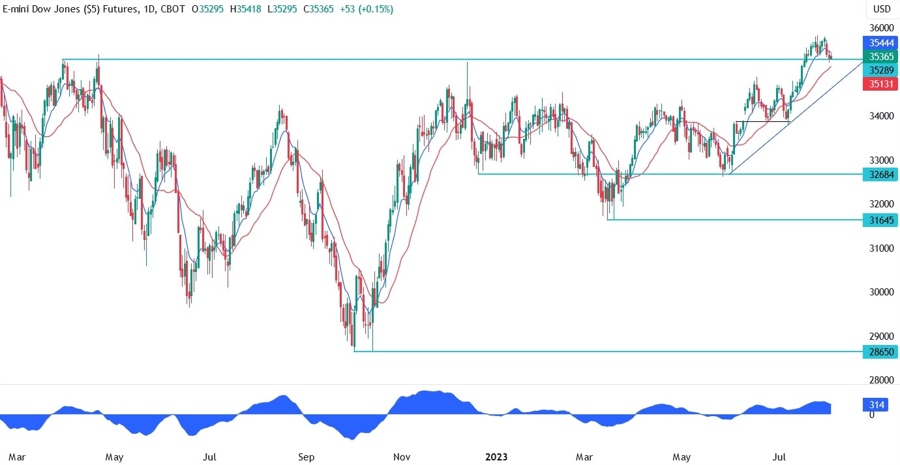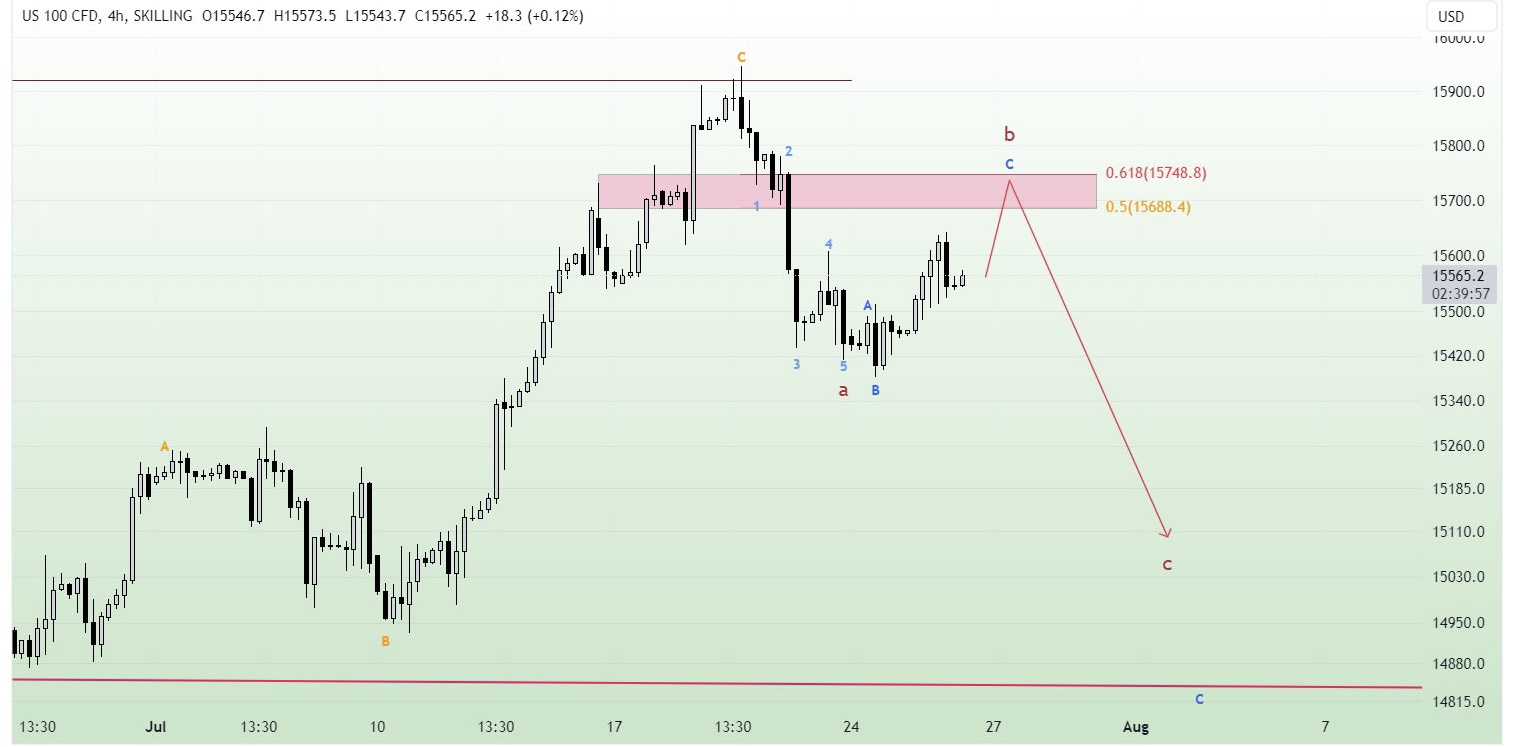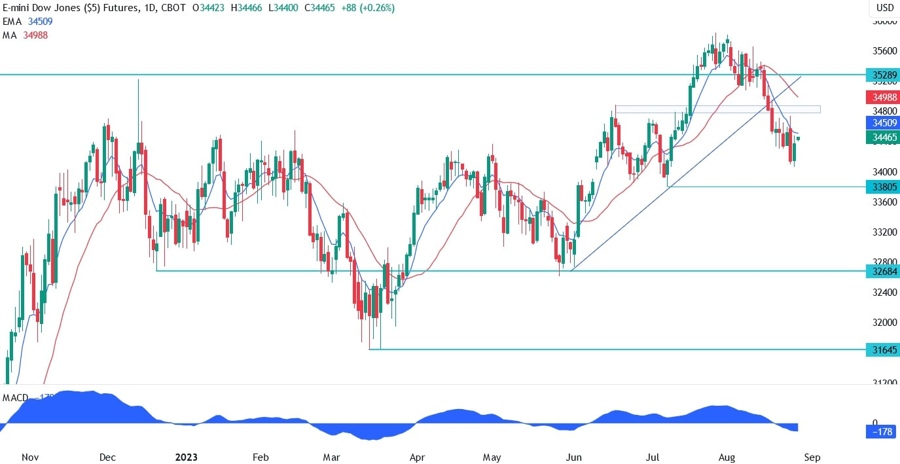S&P/TSX 60
Parent Index
NA
Indices informations
Listed Exchanges
| Toronto Stock Exchange |
Related Instuments
| S&P/TSX Composite |
| S&P/TSX 60 |
| S&P/TSX Completion Index |
Sector Represented
| Real Estate |
| Industries |
| Banks |
| Health Care |
| Utilities |
Indices
- BSE SENSEX
- CAC 40
- CBOE NASDAQ-100 Volatility Index (VXN)
- CBOE Volatility Index (VIX)
- China50-FTSE China A50 Index
- DAX
- DAX PERFORMANCE-INDEX-GDAXI
- DE40-Germany 40 Index DAX
- Dollar Index USDX-DXY-DX-Dixie
- Dow Jones Industrial Average-DJIA
- EURO STOXX 50 SX5E
- FTSE 100 Index-UK100 Index
- Germany 30
- Hang Seng Index
- IBEX 35-Spain 35
- NASDAQ Composite
- NASDAQ-100
- Nikkei 225
- Russell 2000 Index
- S&P/ASX 200
- Singapore Blue Chip Index-STI
- Swiss Market Index (SMI) Switzerland Blue Chip Index
- TecDax Price Index
- TECHDE30-Germany Tech 30 Index
- US Tech 100 Index UT100
- US2000-US Small Cap 2000 Index
- US30-US Wall Street 30 Index
- US30M- US Wall Street 30 Index M
- US500-S&P 500 (GSPC, INX, SPX)
- US500-US SPX 500 Index
- US500M-S&P 500 Mini
- All Ordinaries
- Amsterdam Exchange Index AEX index
- ATX-Austrian Traded Index (ATX)
- BEL 20
- BELEX15
- BIRS
- BIST-Borsa Istanbul
- CROBEX
- EGX 30 Index Egypts Leading Stock Market Index
- FTSE All-Share Index
- FTSE Bursa Malaysia Index-KLCI Index
- FTSE MIB-FTSE MIB 40
- Índice Bursátil Caracas (IBC)
- Índice Bursátil de Capitalización-The General Index
- Indice de Precios y Cotizaciones
- KOSPI
- KSE 100 Index
- MDAX
- MERVAL
- MICEX-The MOEX Russia Index
- OBX Index
- OMX Copenhagen 20 (OMXC20)
- OMX Helsinki 25 (OMXH25)
- OMX Stockholm 30 (OMXS30)
- PSE Index (PSEi)
- PSI20-PSI-20
- S&P/NZX 50 Index
- S&P/TSX 60
- S&P/TSX Composite Index
- S&P/TSX Venture Composite Index
- SOFIX
- SSE Composite Index (上证综指) Shanghai Composite Index
- Straits Times Index (STI)
- SZSE Component Index (深证成指)
- TA-125 Tel Aviv 125 Index
- Taiwan Capitalization Weighted Stock Index (TAIEX)
- The Indice de Precio Selectivo de Acciones- IPC
- CBOE NASDAQ-100 BuyWrite Index (BXN)
- Hang Seng China H-Financials Index
- IBOVESPA-The Bovespa Index-Brazil Stock Exchange Index
- NASDAQ Financial-100
- SDAX – Small cap
- TecDAX
- aaa
- Amex Gold BUGS Index
- Amex Oil Index
- AScX index – Small cap
- ASE Weighted Index
- Athex 20
- Barrons 400 Index
- BELEXline
- BET-10
- BSE DCI
- BSE FCI
- BUMIX – Mid cap
- BUX – Large cap
- CA60-Canada 60 Index
- CAC All Share
- CAC All-Tradable
- CAC Large 60
- CAC Mid & Small
- CAC Mid 60
- CAC Next 20
- CAC Small
- Capital Markets Index
- CASPI
- CBOE DJIA BuyWrite Index (BXD)
- CBOE S&P 500 BuyWrite Index (BXM)
- CBV Index
- CBV Real Estate Index
- CECEEUR
- Central European Blue Chip Index – Regional large cap
- ChinaH-Hong Kong China H-shares Index
- COLCAP
- Colombo Stock Exchange Sector indices (CSE Sectors)
- CROBIS
- CSC X
- CSE 30
- CSE50
- CSI
- CSI 100 Index (中证100指数)
- CSI 300 Index (沪深300指数)
- Dow Jones Global Titans 50
- Dow Jones Transportation Average
- Dow Jones Utility Average
- DSE
- DSEX
- DSM200
- EGX 100 Index
- EGX 50 Index
- EGX 70 Index
- ERS10
- FIRS
- FT 30 Index
- FTSE 350 Index
- FTSE AIM All-Share Index
- FTSE AIM UK 50 Index
- FTSE All-World index series
- FTSE Fledgling Index
- FTSE Italia Mid Cap
- FTSE MID 250 Index
- FTSE SmallCap Index
- FTSE techMark Index
- FTSE/Athex Large Cap
- FTSE/JSE All Share Index
- FTSE/JSE Top 40 Index
- FTSEurofirst 300 Index
- FTSEurofirst Euro Supersector Indices
- GSE All-Share Index
- Hang Seng China Enterprises Index
- Hang Seng China-Affiliated Corporations Index
- HK50
- IDX Composite
- IGBC
- IPSA
- ISEQ 20-The Ireland Overall Stock Exchange Index-ISEQ20
- IT40-Italy 40 Index
- Jakarta Islamic Index (JII)
- Jamaica Stock Exchange (JSE)
- KASE
- KMI 30 Index
- KOSDAQ
- KSE All Share Index
- KSE-30 Index
- Kuala Lumpur Composite Index
- LASI
- LQ-45
- LuxX Index – Luxembourg Stock Exchange
- MADEX index
- Madrid Stock Exchange General Index
- MASI index
- MESDAQ
- MIDDE50-Germany Mid 50 Index
- MIDDE60-Germany Mid 60 Index
- Milanka Price Index (MPI)
- MSCI EAFE
- MSCI GCC
- MSCI Hong Kong Index
- MSCI World
- MSM-30
- NEPSE Index – Nepal Stock Exchange
- NETH25
- NIFTY 100 LOW VOLATILITY 30
- NIFTY 200
- NIFTY ALPHA 50
- NIFTY BANK
- NIFTY CPSE
- NIFTY ENERGY
- NIFTY FINANCE
- NIFTY FMCG
- NIFTY INDIA CONSUMPTION
- NIFTY INFRA
- NIFTY IT
- NIFTY MEDIA
- NIFTY METAL
- NIFTY MIDCAP 100
- NIFTY MIDCAP 50
- NIFTY MIDCAP LIQUID 15
- NIFTY MIDSMALLCAP 400
- NIFTY MNC
- NIFTY Next 50
- NIFTY PHARMA
- NIFTY PSE
- NIFTY PSU BANK
- NIFTY PVT BANK
- NIFTY REALTY
- NIFTY SERV SECTOR
- NIFTY SMALLCAP 100
- NIFTY SMALLCAP 250
- NIFTY SMALLCAP 50
- NIFTY100 EQUAL WEIGHT
- NIFTY100 LIQUID 15
- NIFTY200 QUALITY 30
- NIFTY50 EQUAL WEIGHT
- Nor25-Norway 25 Index
- NSE 30 Index
- NSE All Share Index
- NSE NIFTY 50
- NYSC Arca Major Market Index
- NYSE American Composite Index
- OMX Iceland 15 (discontinued)
- OMX Iceland 6
- OMX Stockholm PI (OMXSPI)
- OMX Vilnius (OMXV)
- OTCM QX ADR 30 Index
- Palisades Water Index (ZWI)
- PFTS index
- Philadelphia Gold and Silver Index
- PHLX Semiconductor Sector
- PSE All Shares Index
- PSE Financials Index
- PSE Mining and Oil Index
- PSI/GERAL
- PX Index
- RTS Index (RTSI)
- Russell 1000
- Russell 2500
- Russell 3000
- Russell MidCap
- Russell Small Cap Completeness
- S&P 100
- S&P 1500
- S&P Asia 50
- S&P BSE 500
- S&P Europe 350
- S&P Global 100
- S&P Global 1200
- S&P Latin America 40
- S&P MidCap 400
- S&P MidCap 400/BARRA Growth
- S&P MidCap 400/BARRA Value
- S&P SmallCap 600
- S&P SmallCap 600/BARRA Growth
- S&P SmallCap 600/BARRA Value
- S&P Vietnam 10 Index
- S&P/ASX 20
- S&P/ASX 300
- S&P/ASX 50
- SA40-South Africa 40 Index
- SBF 120
- SE30-Sweden 30 Index
- SET Index
- SET100 Index
- SET50 Index
- Slovak Share Index
- SMI Expanded
- SMI MID
- SPBLPGPT
- SSE 180 Index (上证180指数)
- SSE 50 Index (上证50指数)
- STOXX Europe 600
- SWI20-Switzerland 20 Index
- Swiss Leader Index (SLI)
- Swiss Performance Index (SPI)
- SZSE 100 Index (深证100指数)
- SZSE 200 Index (深证200指数)
- SZSE 300 Index (深证300指数)
- TA-35 Index
- TA-90
- Tadawul
- TEDPIX
- TEPIX
- The Global Dow
- The GSE Composite Index.
- THETAUSD Theta Network Token vs US Dollar
- TOPIX
- Trinidad and Tobago Stock Exchange (TTSE)
- UBS 100 Index
- Value Line Composite Index
- VN Index
- WIG-Warszawski Indeks Giełdowy
- WIG30
- Wilshire 4500
- Wilshire 5000
- Zimbabwe Industrial Index
- Zimbabwe Mining Index
S&P/TSX 60 (S&P TSX60) Index – Explained
The S&P/TSX 60 Index, commonly referred to as the S&P TSX60, is a stock market index that represents the performance of the 60 largest and most actively traded stocks on the Toronto Stock Exchange (TSX). It is widely considered as a benchmark for the Canadian equity market.
Created by Standard & Poor’s (S&P) in partnership with the TSX Group, the S&P/TSX 60 Index was launched on January 1, 1999. It aims to provide investors with a comprehensive and representative measure of the Canadian stock market’s performance through its constituent companies.
The composition of the S&P/TSX 60 Index is periodically reviewed and revised to ensure it accurately reflects the market’s dynamics. The index includes a diverse range of sectors such as financials, energy, materials, industrials, and consumer staples, among others. This diversification helps reduce concentration risks and provides a balanced representation of the Canadian economy.
Weighting within the S&P/TSX 60 Index is based on market capitalization, meaning that larger companies have a higher influence on the index’s performance. This methodology ensures that the index’s movements are primarily driven by the market leaders and major players in the Canadian stock market.
Investors and market participants use the S&P/TSX 60 Index as a reference point to gauge the overall health and direction of the Canadian stock market. It is often used as a benchmark for portfolio performance evaluation, as well as for creating index-tracking funds and exchange-traded funds (ETFs).
The S&P/TSX 60 Index has gained significant prominence over the years due to its comprehensive coverage of the Canadian stock market. It provides investors with a snapshot of the overall performance and trends within the country’s equity market.
It is important to note that while the S&P/TSX 60 Index may give insights into the broader Canadian stock market, it does not capture the performance of all publicly traded companies in Canada. Other indexes, such as the S&P/TSX Composite Index, cover a larger number of stocks and offer a more extensive representation of the overall market.
In conclusion, the S&P/TSX 60 (S&P TSX60) Index is a key benchmark for the Canadian stock market. It represents the performance of the largest and most actively traded stocks on the TSX, providing investors with an indication of the overall market trends and movements.
S&P/TSX 60 Key Data Points
The S&P/TSX 60 Index, also known as the TSX 60, is a stock market index of the 60 largest companies listed on the Toronto Stock Exchange (TSX). It represents approximately 70% of the total market capitalization of the TSX. The TSX 60 is widely used as a benchmark for Canadian equity performance and provides investors with a snapshot of the overall health and direction of the Canadian stock market.
Here are some key data points about the S&P/TSX 60:
1. Constituent Companies
The S&P/TSX 60 comprises of various industry sectors including financials, energy, materials, and utilities among others. Some well-known companies included in the index are Royal Bank of Canada, TD Bank, Enbridge, Barrick Gold, and Shopify.
2. Market Capitalization
As of [insert date], the total market capitalization of the S&P/TSX 60 was approximately [insert market cap]. This figure represents the combined value of all the companies included in the index and gives an idea of the overall size of the Canadian stock market.
3. Weighting Methodology
The S&P/TSX 60 uses a float-adjusted market capitalization weighting methodology. This means that larger companies with higher market capitalizations have a greater influence on the index’s performance compared to smaller companies. The weights of individual stocks within the index are reviewed periodically to ensure they reflect the current market conditions.
4. Performance
The performance of the S&P/TSX 60 is measured in terms of its total return index. This includes both the price appreciation of the constituent stocks as well as the dividends paid by those companies. Investors can use the index’s performance as a benchmark to compare their own investment returns or to assess the overall performance of the Canadian equity market.
5. Sector Allocation
The S&P/TSX 60 provides insights into the sector composition of the Canadian stock market. It enables investors to understand which sectors are driving the market and how different sectors are performing relative to each other. This information can be valuable for asset allocation strategies and identifying potential investment opportunities.
6. Rebalancing
The S&P/TSX 60 undergoes quarterly rebalancing to ensure that it remains representative of the Canadian equity market. During this process, companies may be added or removed from the index based on certain criteria, such as changes in market capitalization or liquidity. This regular adjustment ensures that the index accurately reflects the current state of the Canadian stock market.
7. Index ETFs
Investors can gain exposure to the S&P/TSX 60 through exchange-traded funds (ETFs) that track the index. These ETFs allow individuals to invest in a diversified portfolio representing the largest Canadian companies with a single trade. They provide a convenient way to gain broad exposure to the Canadian equity market without having to purchase individual stocks.
In conclusion, the S&P/TSX 60 is a crucial benchmark for Canadian equity performance. Its key data points, including constituent companies, market capitalization, weighting methodology, performance, sector allocation, rebalancing, and availability of index ETFs, provide valuable insights to investors and serve as an indicator of the overall health and direction of the Canadian stock market.
Fundamental Summary
- Coming soon!!










